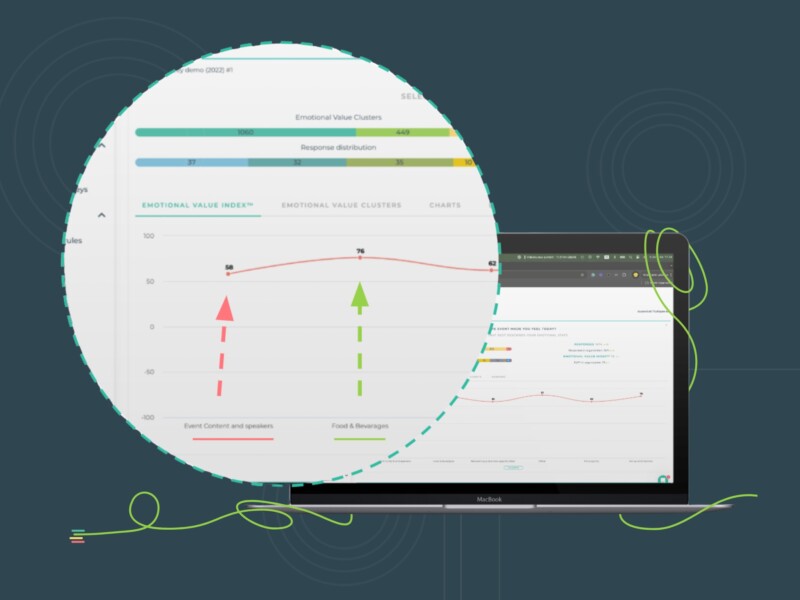Customer Experience (CX) metrics are used to track, measure, and evaluate how customers regard their experience with a company. They are invaluable for eCommerce stores where the opportunity to communicate and engage face-to-face with customers is scarce. These metrics help brands gauge if they are meeting consumer expectations and also identify gaps and pain points that need to be addressed.
Although there are many CX metrics, you don’t have to use all of them. You can (and should) select the most suitable metrics depending on the nature of your business and your organization’s objectives. Here are the top 3 CX metrics to use to improve your eCommerce business!
1. Emotional Value Index (EVI)
EVI® is a metric that measures the emotional element involved in customer experience. It looks at how customers feel at different touchpoints throughout the buying journey. Using the EVI® survey, you can gauge how customers react emotionally to the experiences and engagements they have with the brand from beginning to end. You can also include an open-ended question to determine why they feel that way.
EVI® is an essential metric, especially for eCommerce brands, to shine among a huge pool of competitors. As you can apply it for any stage, you can monitor and address a myriad of issues ranging from website interface to customer support. You can embed pop-up surveys to gather quick and real-time perceptions from customers while they shop on your website.
The higher your EVI® score, the higher the percentage of your web store visitors that convert to customers. In fact, there is an 80% correlation between the web store conversion rates and the EVI®.
Learn more about the EVI® survey here.
2. Customer Satisfaction Score (CSAT)
CSAT is one of the popular metrics used by almost every industry as it is very straightforward and easy to measure. It’s also versatile and can be used to measure a single touchpoint or the entire journey, similar to EVI®. You can use CSAT to determine if customers are satisfied with the available products, payment options, custom support, or other aspects related to the eCommerce store.
However, it’s noteworthy that CSAT comes with its limitations, and without an open-ended question, it will be difficult to understand the reason behind the responses. Satisfaction is also subjective, and the metric is also prone to survey bias. But, it’s helpful to gain a surface-level understanding of customer experience.
Learn more about the CSAT survey here.
3. Customer Effort Score (CES)
CES aims to measure the level of effort a customer has to exert to get something done, whether it’s purchasing a product from your website or getting an issue resolved through the customer support team. Customers often choose eCommerce shopping for the convenience it promises, and they expect a smooth and seamless buying journey.
CES helps you determine if customers can transition from one stage to another in the buying journey with less effort. It’s one of the best metrics to identify pain points and lags in the buying journey and make improvements. Similar to EVI®, you can use short or pop-up surveys after the activity or engagement to gather data. Also, pairing CES with EVI® will provide you with more context to the issue at hand and its severity.
Learn more about the CES here.
Gain Better Insights with CX Metrics
If you want to optimize the use of CX metrics like EVI®, you can enrich it with transactional and behavioral data to better understand your customers. For example, pairing EVI® data with transactional data like the basket size of the purchases helps you understand what emotions drive higher revenue and what emotions lead to churn. Similarly, pairing EVI data with behavioral data helps you pinpoint emotions that will lead to positives like increased signups to the newsletter or negatives like cart abandonment.
While the above are the top 3 metrics that can be super helpful for eCommerce business, there are many more that you can incorporate with time or based on your business goals. You can take a look at the CX metric comparison chart to understand the advantages and disadvantages of each metric.



